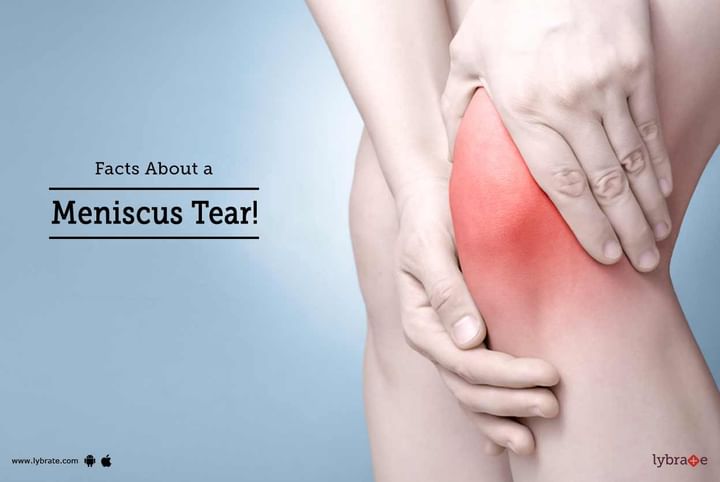Facts About a Meniscus Tear!
A meniscus tear is a common injury associated with the knee. The meniscus acts a defensive shield, providing a much-needed cushion to the knees, keeping it stable and injury free. Each knee joints contain two menisci located between the tibia and the femur. In this article, we will discuss important details related to meniscus tear to help you understand the injury better.
Facts related to a Meniscus Tear
- A meniscus tear can affect all and sundry. However, sports persons (especially those associated with soccer, tennis, football, and basketball) and aged people are more susceptible to the condition.
- As per Boston Children's Hospital, of late there has been a steady rise among children suffering from the meniscus tear.
- Osteoarthritis may act as a catalyst, accelerating the chances of a meniscus tear.
- In most of the times, a meniscus tear occurs when you exert immense pressure on the knee joints such as lifting a heavy object or suddenly standing up from a squatting position. With age, the meniscus is known to suffer from a natural wear and tear resulting in the injury.
- As already mentioned, there are two menisci present in each knee joints. The one present inside the knee joint is called Medial Meniscus. Lateral Meniscus is the one present on the outer part of the joint.
- Depending on the extent and severity of the injury, a meniscus tear may be
- A minor tear: This is a small injury accompanied by mild pain and swelling which may last for not more than 2-3 weeks.
- A moderate tear: The injury results in pain that are concentrated mainly around the center or the sides of the knee. The swelling goes from bad to worse over the next 2-3 days, with the person facing discomfort while bending their knee. The knee also stiffens. You may be relieved of the symptoms within a week or two but overusing the knee or twisting it may cause a relapse.
- A severe tear: True to its name, your knee is the worst affected in this case. The cartilage tear may be such that the torn pieces get lodged in between the joint spaces causing the knee to lock, pop or even catch. A person experiences unbearable pain and discomfort along with stiffness and swelling (can be immediately following the injury or within 2-3 days). In the case of a severe meniscus tear, a person may not be able to straighten the knee at all (without treatment and medical intervention)
Treatment for a meniscus tear may be surgical or nonsurgical.
The nonsurgical treatment involves the application of cold compress on the affected area. The person needs to take ample rest exerting minimum pressure on the affected knee. Physiotherapy and strengthening exercise can go a long way in improving the condition. To reduce the pain and swelling, the doctor may prescribe painkillers and NSAIDs (Nonsteroidal Anti-Inflammatory Drugs). Keep the knee elevated. The use of elastic wraps may be helpful.
In extreme cases, surgery may help to treat the injury and the associated symptoms. In case you have a concern or query you can always consult an expert & get answers to your questions!



+1.svg)
